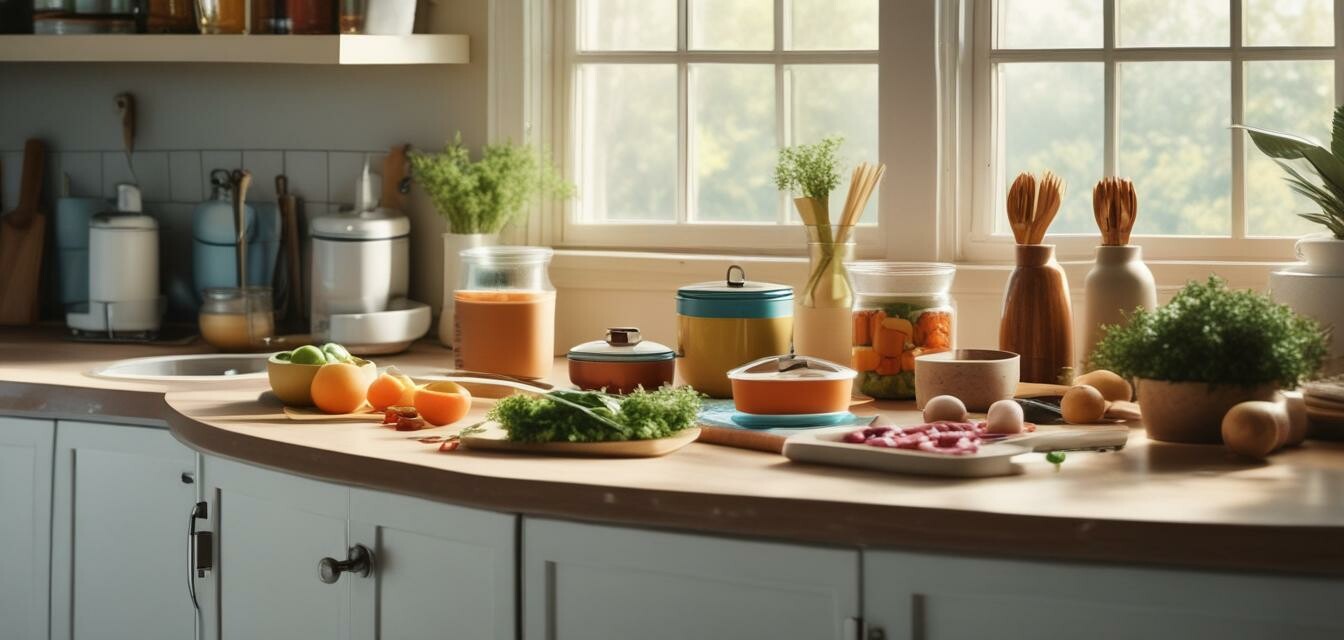
Exploring plant-based kitchen innovations
Key Takeaways
- Plant-based materials are gaining popularity in kitchenware.
- Consumers are increasingly interested in sustainable practices.
- Innovative designs are being developed using eco-friendly concepts.
- Kitchen storage solutions are evolving to meet eco-conscious needs.
- Staying informed about trends can help consumers make responsible choices.
As the world increasingly turns its focus toward sustainability and environmental responsibility, the kitchenware industry is embracing plant-based innovations in a big way. This article will explore the rise of these innovations in kitchenware and food storage while focusing on consumer interest and sustainable options.
The rise of plant-based kitchenware
Over the past few years, there has been a significant shift in consumer preferences, leading to an increased demand for sustainable kitchenware. Plant-based materials, such as bamboo, cork, and bioplastics, are finding their way into modern kitchens. The market for these products is expanding as more companies recognize the growing interest in eco-friendly options.
1. Popular plant-based materials
| Material | Description | Common Uses |
|---|---|---|
| Bamboo | A fast-growing grass that is highly renewable. | Utensils, cutting boards, kitchen storage. |
| Cork | The bark of the cork oak tree, harvested without harming the tree. | Coasters, trivets, and placemats. |
| Bioplastics | Plastics that are derived from renewable biomass. | Food containers, utensils, and wraps. |
| Recycled materials | Products made from post-consumer waste. | Dinnerware, storage solutions, and decor. |
Consumer interest in sustainability
Today's consumers are more environmentally conscious than ever. As the trend towards eco-friendliness continues, people are increasingly attracted to kitchenware made from sustainable materials. In fact, research shows that many consumers prioritize sustainability when making purchasing decisions.
2. Factors driving consumer interest
- Awareness: As environmental issues become more prominent, consumers are more informed about their choices.
- Health: Many prefer products that are free from harmful chemicals, often found in traditional plastic.
- Cost-effectiveness: Sustainable items often have a longer lifespan, providing better value over time.
- Social responsibility: Consumers want to support brands that align with their values.
Innovative designs in kitchen storage
Innovation is not just limited to the materials used in kitchenware but extends to the designs as well. The focus on sustainability has given rise to new concepts that merge functionality with aesthetics.
3. Highlights of innovative storage solutions
| Product Type | Features | Benefits |
|---|---|---|
| Compostable bags | Made from plant-based materials that break down naturally. | Minimizes landfill waste and is eco-friendly. |
| Bamboo storage containers | Durable and stylish containers for food storage. | Attractive design that blends with modern decor. |
| Silicone food wraps | Reusable wrappers that replace plastic wrap. | Reduces plastic usage while preserving food. |
| Glass jars | Recycled glass options for versatile storage. | Hygienic and reusable without harmful chemicals. |
Trends to watch
As the sustainable kitchenware market continues to evolve, certain trends are gaining traction. Staying informed about these can help consumers make more responsible choices when shopping for kitchen products.
4. Emerging trends in plant-based kitchenware
- Increased availability of compostable options across various product lines.
- Designs that incorporate multifunctionality for added convenience.
- The rise of local brands focusing on sustainable practices.
- Collaborations between kitchenware companies and environmental organizations to promote eco-friendly practices.
Final thoughts
The exploration of plant-based kitchen innovations reflects a significant movement towards sustainability that aligns with modern consumer values. As individuals become more conscious of their ecological footprint, the demand for eco-friendly kitchenware will likely continue to rise.
Tips for choosing eco-friendly kitchenware
- Look for materials with certifications that prove sustainability.
- Consider products with minimal packaging to reduce waste.
- Opt for durable kitchenware that will last over time.
- Research brands to understand their sustainability practices.
Pros
- Sustainable and eco-friendly options.
- Healthier materials free from harmful chemicals.
- Innovative designs that are visually appealing.
- Rising availability of various plant-based products.
Cons
- Higher initial cost for some sustainable products.
- Limited options in certain product categories.
- Some plant-based materials may require special care.
For more information and detailed guides on eco-friendly kitchenware, check out our article on Buying Guides or explore our News and Trends section to stay updated on the latest innovations.



